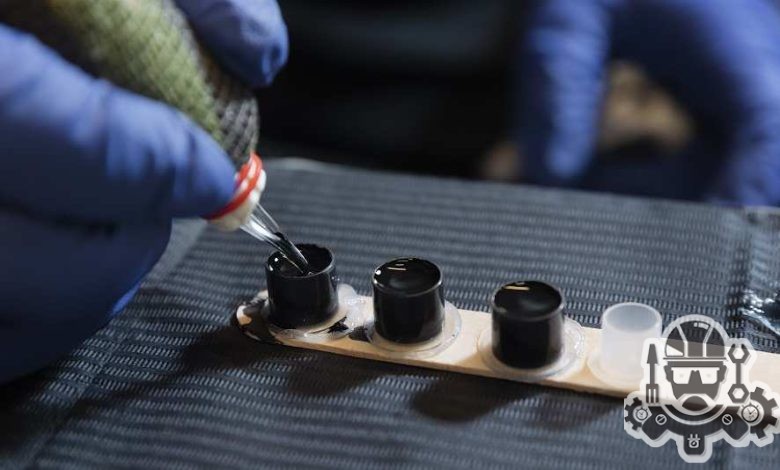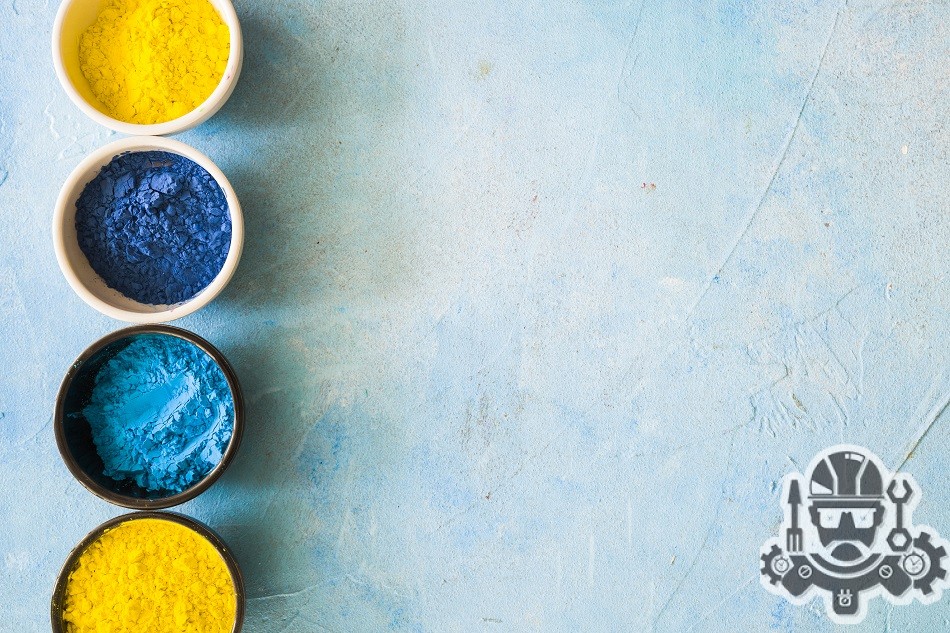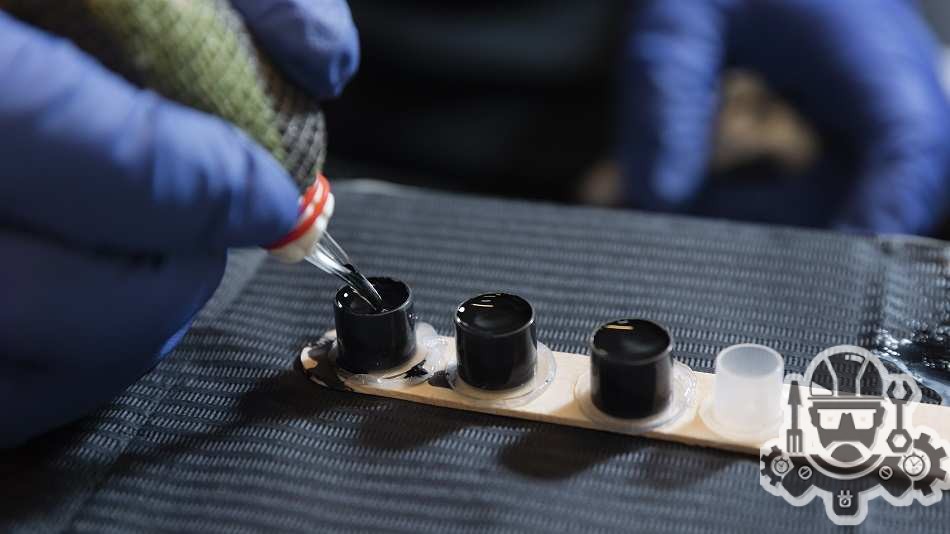Revolutionizing Textile Dyeing: Anhydrous Dyeing Innovation

Contents
Anhydrous Dyeing Process
Traditionally, dyeing processes involve the immersion of fabrics in large volumes of water, resulting in significant water waste and chemical pollution. This outdated method also requires high energy consumption for water heating and drying. Anhydrous dyeing process, on the other hand, eliminates the need for excessive water usage, making it a sustainable alternative for the industry.
The anhydrous dyeing process starts with the application of a specialized reactive dye onto the fabric surface. These dyes have a unique chemical composition that enables them to bond directly with the fabric fibers without the aid of water. The dye penetrates the fabric, ensuring a vivid and long-lasting color. This method requires minimal dye compared to traditional dyeing processes, contributing to cost savings for manufacturers.
Another advantage of the anhydrous dyeing process is the reduced use of chemicals. Water-based dyeing processes require the addition of various chemicals, such as leveling agents and pH adjusters, to ensure even dye penetration. In contrast, anhydrous dyeing eliminates the need for these chemicals, making it a more environmentally friendly option.
The absence of water in the dyeing process also results in a significantly shorter dyeing time. Traditional dyeing methods usually involve multiple rinsing and drying steps, which consume a considerable amount of time and energy. Anhydrous dyeing, however, eliminates the need for rinsing, and fabric drying is accelerated due to the absence of excess moisture.
The anhydrous dyeing process also offers benefits in terms of reduced wastewater discharge. Traditional dyeing processes generate massive amounts of wastewater, containing various chemicals and dye residues. This wastewater not only pollutes water bodies but also poses a risk to human health. Anhydrous dyeing, with its minimal water usage, significantly reduces wastewater discharge, making it a more sustainable option.
Moreover, the anhydrous dyeing process has the potential to revolutionize the textile industry’s carbon footprint. Water-based dyeing methods consume immense amounts of energy for water heating and drying steps, resulting in significant greenhouse gas emissions. By eliminating water usage, anhydrous dyeing significantly reduces energy consumption and subsequently decreases carbon emissions.
Although the anhydrous dyeing process offers numerous advantages, it is important to mention that it is still in its early stages of development and implementation in the textile industry. Further research and development are necessary to optimize this process and ensure its long-term viability and effectiveness.
In conclusion, the anhydrous dyeing process provides a sustainable and efficient alternative to traditional water-based dyeing methods in the textile industry. By eliminating excessive water usage, reducing chemical consumption, accelerating dyeing time, and decreasing wastewater discharge, this process minimizes the industry’s environmental impact while maintaining high-quality and vibrant fabrics.
Textile dyeing techniques

Textile dyeing is an ancient art that has been passed down through generations, evolving and perfecting techniques along the way. This captivating process involves coloring fabrics, yarns, or fibers to achieve various shades and hues. With a myriad of dyeing techniques available, the possibilities for creating unique and vibrant textiles are boundless.
Tie-Dye: A Kaleidoscope of Patterns
One of the most recognizable textile dyeing techniques is tie-dye. This technique involves tying sections of fabric with strings or rubber bands to create patterns, and then applying different dyes to achieve a striking effect. The result can range from bold and psychedelic to subtle and earthy, making tie-dye a timeless and versatile choice.
Batik: Waxing Poetic on Fabrics
Batik is a technique that originated in Indonesia and involves applying wax to specific areas of the fabric before dyeing. The wax acts as a resist, preventing the dye from penetrating those areas. Once dyed, the wax is removed, revealing intricate patterns and designs. This labor-intensive technique requires skill and patience. However, the results are breathtaking, adding a touch of elegance and artistry to fabrics.
Shibori: The Art of Resist Dyeing
Shibori, a traditional Japanese dyeing technique, is a form of resist dyeing. It involves manipulating fabric through various folding, twisting, and binding methods, which creates patterns by resisting the dye. The fabric is then dyed, and when the bindings are removed, stunning and intricate patterns emerge. Shibori offers endless possibilities for creativity, allowing artists to create everything from delicate flower-like patterns to bold and geometric designs.
Screen Printing: Transferring Art onto Fabric
Screen printing is a method where a mesh screen is used to transfer ink onto the fabric. This technique is popular due to its ability to reproduce intricate designs accurately and efficiently. It is commonly used in the textile industry to create uniform patterns on a large scale. Whether it’s a simple logo or a complex illustration, screen printing allows for precise and consistent results.
Discharge Printing: Unveiling Colors through Subtraction
Discharge printing is a technique where dyes or pigments are removed or bleached from previously dyed fabric, resulting in a striking design. This process involves using chemicals to break down the original dye and replacing it with another color, creating a contrasting effect. Discharge printing can be used to create intricate designs on dark-colored fabrics, producing dramatic and eye-catching results.
Natural Dyes: Embracing Earth’s Colors
While synthetic dyes have become widely popular, the use of natural dyes continues to be cherished for its environmental friendliness and unique, muted tones. Natural dyes are derived from plants, minerals, or insects and require careful extraction and preparation. Each natural dye yields a distinct color, connecting us to the earth and its rich palette. Exploring the world of natural dyes allows us to embrace a sustainable and harmonious approach to textile dyeing.
Conclusion
Textile dyeing techniques offer a vast array of options to transform ordinary fabrics into extraordinary works of art. Whether it’s the timeless tie-dye or the intricate patterns of batik and shibori, each technique has its own charm and unique characteristics. The combination of traditional and modern methods, such as screen printing and discharge printing, pushes the boundaries of textile design even further. Natural dyes, in their muted beauty, remind us of the importance of sustainable practices. With textile dyeing techniques, the world of colors is unlocked, allowing us to create vibrant textiles that captivate the eye and inspire the soul.
Benefits of anhydrous dyeing

One of the primary benefits of anhydrous dyeing is its environmental friendliness. Traditional dyeing processes require large amounts of water, which results in substantial water wastage and pollution. Anhydrous dyeing eliminates the need for water, significantly reducing the environmental footprint of the textile dyeing process. This reduction in water consumption also translates to lower energy consumption since less energy is required for water treatment and heating.
Another advantage of anhydrous dyeing is its cost-effectiveness. By eliminating the need for water, manufacturers can save on water procurement, treatment, and disposal costs. Additionally, the reduced energy consumption leads to lower electricity bills. These cost savings can be passed on to the consumers, making textiles dyed through anhydrous dyeing more affordable.
Anhydrous dyeing also has the potential to revolutionize the textile industry in terms of speed and efficiency. Traditional dyeing processes often require significant time for the dye to penetrate the fabric and for the excess dye to be rinsed out. Anhydrous dyeing, on the other hand, offers faster dyeing times since there is no need for dye penetration or rinsing. This can lead to increased productivity and reduced lead times in textile production.
Furthermore, anhydrous dyeing allows for greater color precision and consistency. Without the presence of water, the dye adheres to the fabric more effectively, resulting in vibrant and long-lasting colors. This is particularly advantageous for textile manufacturers who require consistent color matching across different batches of products.
Table 1 highlights the key benefits of anhydrous dyeing:
| Benefit | Description |
| Environmental Friendliness | Eliminates water consumption and reduces pollution. |
| Cost-effectiveness | Saves on water and energy costs. |
| Increased Speed and Efficiency | Shorter dyeing times and improved productivity. |
| Greater Color Precision and Consistency | Vibrant and long-lasting colors with consistent results. |
In conclusion, anhydrous dyeing offers a multitude of benefits for textile manufacturers, the environment, and consumers. Its waterless and energy-efficient nature reduces both costs and environmental impact. The faster dyeing times and greater color precision provide a competitive advantage in terms of productivity and product quality. As the textile industry continues to prioritize sustainability and efficiency, anhydrous dyeing has the potential to become the future of textile dyeing.
Innovation in textile dyeing
Innovation in Textile Dyeing: Revolutionizing the Fashion Industry
In today’s rapidly evolving fashion industry, innovation plays a crucial role in shaping the way clothing is produced, designed, and manufactured. One significant area of innovation that has gained momentum is textile dyeing. Textile dyeing has come a long way from traditional methods, embracing novel approaches and technologies to create innovative and sustainable solutions. This article aims to explore the latest breakthroughs in textile dyeing and their impact on the fashion industry.
One of the most exciting innovations in textile dyeing is the advent of digital printing. This cutting-edge technology allows for precise and intricate designs to be printed directly onto the fabric. With digital printing, there is no need for excessive quantities of water or large dyeing baths, making it a more sustainable and eco-friendly alternative to conventional dyeing. Furthermore, it enables designers to experiment with endless color possibilities and complex patterns, giving rise to unique and personalized garments.
Another ground-breaking innovation in textile dyeing is the emergence of natural dyes. Traditional synthetic dyes contribute to water pollution and pose health risks to both the environment and individuals involved in the dyeing process. Natural dyes, on the other hand, are derived from plants, minerals, and even insects, offering a sustainable and non-toxic alternative. These dyes not only reduce the environmental impact but also create a niche for organic and eco-friendly fashion, catering to a growing consumer demand for sustainability.
Nanotechnology has also made its mark on textile dyeing, bringing forth several advancements. One notable innovation is the development of nanoscale pigments that can be attached to fabric fibers at the molecular level. This technique enhances colorfastness, increasing the lifespan of garments while reducing fading during washing. Additionally, nanotechnology enables textiles to become resistant to stains and water, a highly desirable feature for everyday clothing. These applications of nanotechnology have revolutionized the durability and functionality of textile dyeing.
Sustainability has become a central concern in the fashion industry, driving innovation in all aspects of clothing production. In response to this growing demand, innovative dyeing techniques are continuously being developed to minimize the industry’s ecological footprint. One such technique is air dyeing, which uses compressed air instead of large amounts of water to dye fabrics. This method saves water, energy, and eliminates dye effluent, making it a greener alternative to conventional dyeing processes. Furthermore, it significantly reduces the overall production time, allowing for faster delivery of garments to the market.
Innovation in textile dyeing not only benefits the environment but also offers economic advantages. By adopting sustainable and innovative dyeing technologies, fashion brands can attract conscientious consumers who are willing to pay a premium for environmentally friendly products. This shift towards sustainability also incentivizes manufacturers to adopt more ethical and responsible practices throughout the production chain, ensuring better working conditions and fair wages for textile workers.
In conclusion, innovation in textile dyeing has had a profound impact on the fashion industry. From digital printing to natural dyes, nanotechnology, and sustainable dyeing techniques, these innovations have transformed the way clothes are designed, manufactured, and consumed. They not only offer new possibilities for designers to create unique and personalized garments but also address the pressing need for sustainability. By embracing these innovations, the fashion industry can move towards a more environmentally friendly and socially responsible future.
The anhydrous dyeing process is a technique used in textile dyeing where water is completely eliminated from the dyeing process. Instead of water, solvents are used to dissolve and apply the dyes onto the fabric.
Anhydrous dyeing offers several benefits in the textile industry. It reduces water consumption, energy consumption, and pollution caused by traditional dyeing methods. It also allows for better control over the dye penetration and color fastness of the fabric.
Anhydrous dyeing contributes to innovation in textile dyeing by introducing a more sustainable and efficient dyeing process. It encourages the development of new dye formulations, solvents, and application methods. It also opens up possibilities for dyeing textiles that are traditionally difficult to dye using conventional methods.
Although anhydrous dyeing offers numerous benefits, there are several challenges and limitations. The cost of solvents and specialized machinery required for anhydrous dyeing can be higher compared to traditional dyeing methods. Additionally, there may be limitations in terms of the availability and compatibility of dyes and solvents for different types of fabrics.
Anhydrous dyeing contributes to sustainable textile production by significantly reducing water consumption in the dyeing process. This helps in conserving water resources and reducing the environmental impact of textile dyeing. It also reduces energy consumption and carbon emissions associated with the drying process. Overall, anhydrous dyeing promotes more sustainable and eco-friendly textile production practices.



